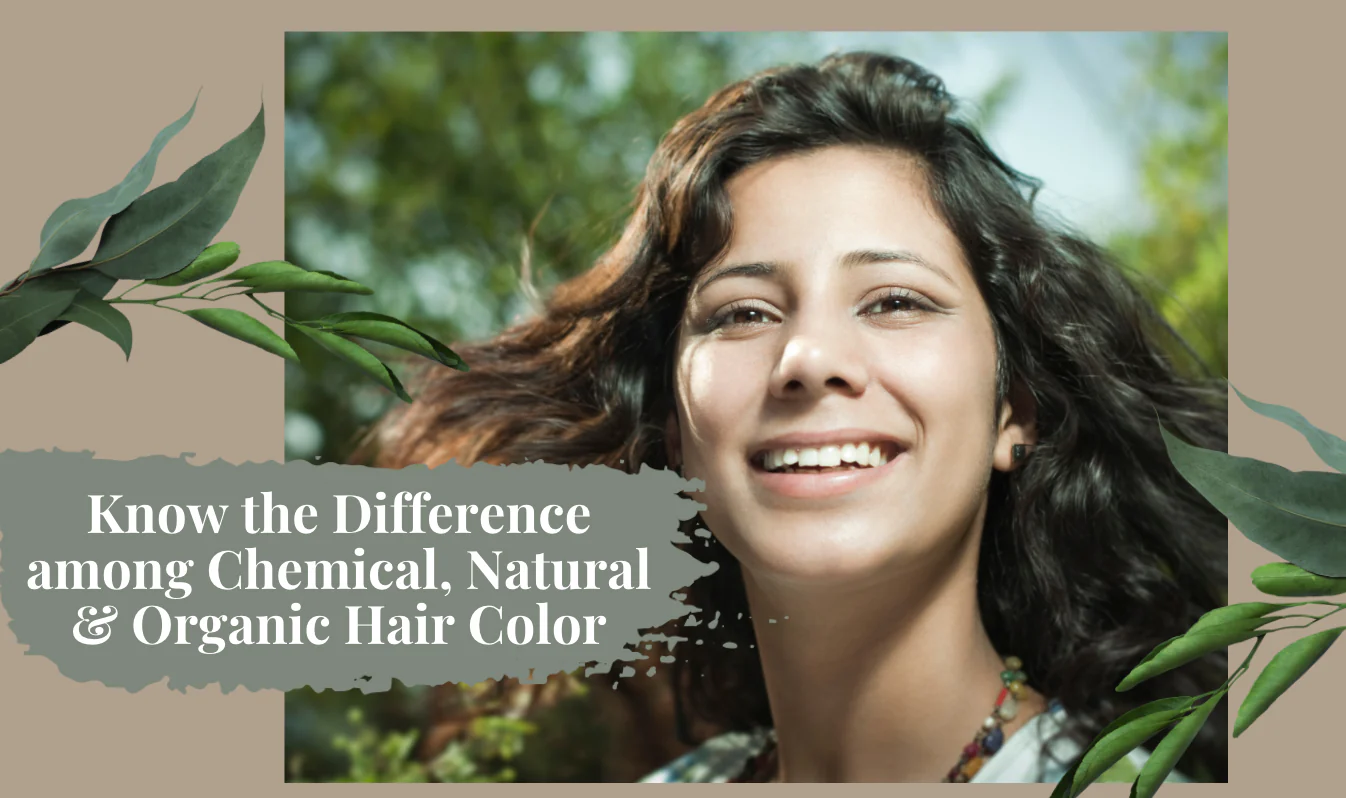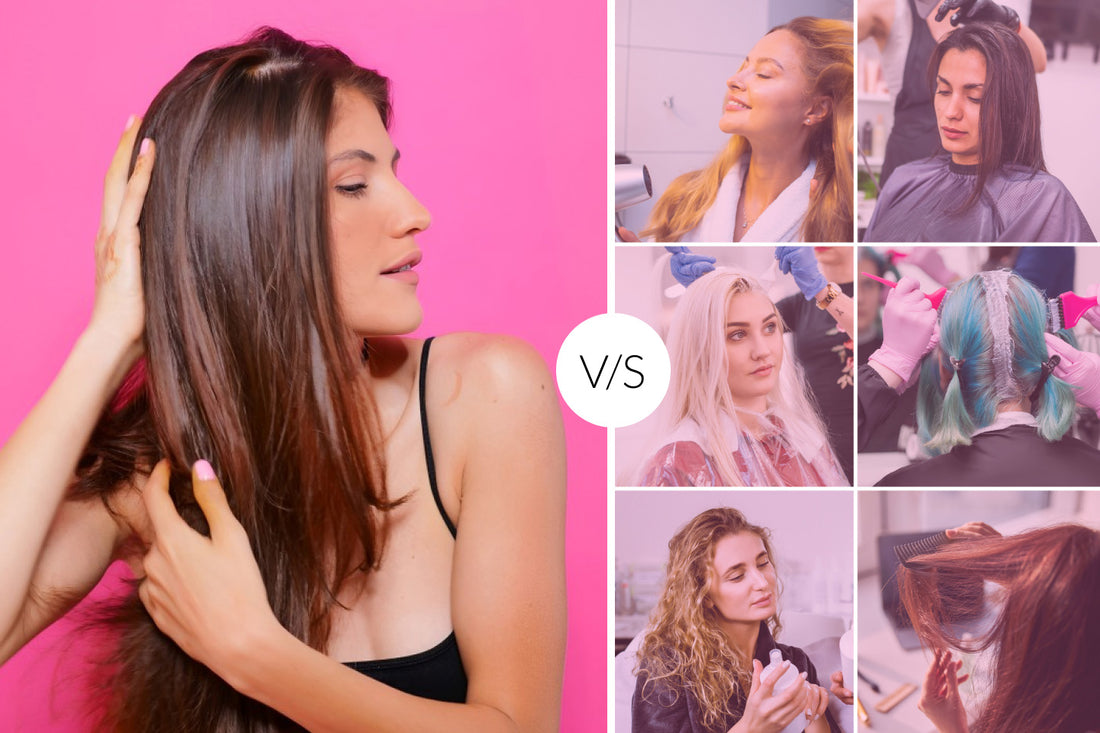Blog
Consumer Behavior Study: Natural vs Chemical Hair Dye Preferences in India

In the ever-evolving landscape of beauty, the preferences surrounding hair dye reveal a rich interplay of cultural values, health consciousness, and environmental awareness. As Indian consumers navigate the delicate balance between tradition and modernity, a significant trend emerges: a pronounced preference for natural hair dyes over their chemical counterparts. This study delves deeply into the motivations behind these preferences, offering insights into the forces shaping consumer behavior in the Indian hair care market.
Understanding consumer choices in hair dye products transcends aesthetic considerations. It reflects a broader societal shift towards health consciousness and sustainable living. With approximately 70% of consumers opting for natural dyes, this shift embodies a compelling narrative of personal identity, environmental responsibility, and a quest for authenticity in beauty practices.
Embracing the Dance of Consumer Insights
In recent years, India’s hair care market has witnessed a revolutionary shift as consumers become increasingly discerning about their choices. Historically, hair dyeing practices in India have leaned towards traditional methods, with henna at the forefront. However, globalization has led to an influx of chemical products, creating a dichotomy in consumer preferences. As a result, understanding what compels consumers to lean towards natural remedies becomes essential in grasping the broader implications of beauty choices in contemporary society.
The Landscape of Consumer Preferences
To grasp the full picture of hair dye preferences, it’s crucial to analyze current trends within India’s beauty industry. A recent survey involving 1,000 participants across urban and rural locales revealed that a striking 70% prefer natural hair dyes. The primary motivations include health concerns, environmental awareness, and the desire for authenticity. This inclination toward natural options signifies more than just a trend; it embodies a cultural awakening surrounding wellness and sustainability that permeates various aspects of personal care.
Health Concerns Drive Preference
Health considerations remain paramount in influencing consumer choices regarding hair dye. A majority of respondents, about 60%, expressed concern about the potential hazards associated with chemical hair dyes, notably ingredients like ammonia and paraphenylenediamine (PPD). These chemicals are notorious for causing allergic reactions and skin irritations, prompting individuals to seek safer alternatives. As a testament to this trend, many consumers cite their apprehensions regarding long-term health effects, including potential links to severe conditions. This growing awareness resonates deeply with a collective shift towards more natural, organic solutions in personal grooming.
This shift is not merely anecdotal; it reflects a broader cultural wave towards health consciousness. Observing friends and family transition to natural alternatives underscores a movement rooted in self-care and holistic wellness that transcends individual experiences.

Environmental Consciousness
An equally compelling motivation influencing consumer behavior is environmental consciousness. Approximately 40% of survey participants linked their preference for natural hair dyes to an intention to lessen ecological harm. The acknowledgement that chemical dyes contribute significantly to water pollution amplifies the desire to embrace eco-friendly alternatives. As climate change discussion permeates public discourse, consumers increasingly gravitate towards brands that embody sustainable practices.
Participation in local sustainability initiatives illustrates how community engagement fosters awareness. Many conversations within these circles emphasize the alignment between hair dye choices and holistic environmental stewardship, emphasizing the importance of supporting brands that prioritize eco-friendly solutions.
The Quest for Authenticity
With authenticity playing an essential role in modern consumer behavior, many are drawn to natural hair dyes for their perceived genuineness. Around 30% of survey respondents indicated that natural dyes resonate with their self-image, allowing them to express their authentic selves. Traditional beauty standards are evolving as cultures embrace diverse representations of beauty, emphasizing natural tones over strikingly artificial hues.
This shift hints at a deeper societal yearning for self-acceptance and authenticity, fostering discussions around what it means to be beautiful in a world often saturated with unrealistic portrayals.
Age and Economic Influences
Delving into demographics reveals compelling insights into consumer preferences. Younger consumers, specifically those aged 25 to 40, exhibit a propensity for natural hair dyes, with a remarkable 75% indicating this choice. This demographic is distinctly more attuned to trends surrounding health and sustainability, actively seeking products that align with their values.
Conversely, older generations demonstrate more loyalty to established brands, often prioritizing effectiveness over the newfound awareness of health implications. Economic factors also come into play, with higher-income individuals more inclined to invest in premium, natural alternatives.
Millennials and Gen Z are undoubtedly modifying the market landscape, championing conscious consumption. Their willingness to align purchases with personal beliefs illustrates an invigorating commitment to sustainability, pushing the beauty sector to evolve accordingly.
Cluster Analysis of Consumer Segments
Analyzing consumer preferences reveals three distinct segments, characterized by unique motivations:
- Natural Enthusiasts (40%): This group is fervently invested in health and environmental consciousness, seeking premium products aligning with their values.
- Chemical Users (30%): Prioritizing convenience and established brand familiarity, this segment still opts for chemical dyes despite increasing health awareness.
- Undecided Consumers (30%): Often caught between natural and chemical options, this group is influenced by external factors like peer opinion and online reviews, suggesting potential for educational engagement.
These segments illustrate the complexities surrounding preferences, highlighting varying motivations that brands must consider in their marketing strategies.
The Impact of Modernization on Hair Dye Choices
The juxtaposition of tradition and modernity presents a fascinating narrative in consumer choices. While some are drawn to natural remedies rooted in Ayurvedic practices, others continue to prioritize the instant gratification chemical dyes offer. The challenge lies in finding equilibrium between these choices, representing their unique fragments of identity and lifestyle.
Caught at this crossroads myself, I appreciate the benefits that both approaches can offer. Brands that successfully merge traditional values with modern needs can cater to diverse consumer bases seeking authenticity alongside convenience.
Strategizing for Market Engagement
In light of the ongoing shift towards natural products, brands must adopt effective strategies to harness this momentum:
- Focus on Education: Consumer awareness campaigns highlighting the advantages of natural dyes can significantly reshape opinions. Marketing initiatives should effectively combat misinformation while showcasing product efficacy and addressing health concerns associated with chemical alternatives.
Innovate While Affordability: As demand for natural solutions grows, companies should work towards delivering high-quality yet affordable products. Striking this balance can captivate a broad consumer spectrum, maximizing market interest.
Digital Engagement: With the rapid expansion of e-commerce, brands must leverage various platforms to connect with younger demographics, offering personalized shopping experiences that ensure a stronger online presence.
Future Research Directions
Reflecting on the insights gleaned, several avenues for future study emerge:
- Quantitative Studies: Large-scale surveys can yield deeper insights into the intricacies of purchasing behavior, further validating current findings.
Qualitative Insights: In-depth interviews and focus groups may provide a richer understanding of consumer attitudes and motivations, moving beyond surface-level statistics.
International Comparisons: Expanding research to compare preferences between India and other nations can help identify broader patterns, potentially influencing market strategies.
Conclusion
The evolving preferences for hair dye products in India encapsulate a significant cultural shift towards health and sustainability. This transformation is shaped by a myriad of personal identities and collective values guiding consumer behavior. As individuals increasingly desire products that reflect their values, the beauty industry must adapt strategically.
Understanding these dynamics paves the way for brands to engage meaningfully with their audiences, thereby addressing health concerns, embracing environmental responsibilities, and crafting narratives that resonate. Siddharth Herbs, as a pioneering manufacturer of natural henna-based products, is ideally positioned to thrive within this transformative environment. By committing to quality and sustainability, Siddharth Herbs meets the modern consumer’s desires, paving the way for an era where beauty practices align seamlessly with personal values.
As we scrutinize consumer behavior, revealing insights about motivations, challenges, and opportunities, we embrace the unfolding narrative toward a future where beauty transcends mere aesthetics, integrating wellness, authenticity, and ecological integrity into the foundations of modern life.

